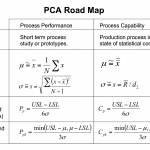
Guest Post by John Ayers (first posted on CERM ® RISK INSIGHTS – reposted here with permission)
What Does Eloquent Design Mean to You?
Eloquence has many definitions primarily applied to speaking and writing. One definition is the art or practice of using fluent, forceful, and persuasive discourse. Over the ages, authors have variously described eloquence as “words sweetly placed and modestly directed” (William Shakespeare), “a painting of thought” (Blaise Pascal), “the poetry of prose” (William Cullen Bryant), “the appropriate organ of the highest personal energy” (Ralph Waldo Emerson), and “the art of clothing the thought in apt, significant and sounding words” (John Dryden).
I think many of these words describing eloquence can also be applied to product design. Some examples and rational are presented below. [Read more…]













